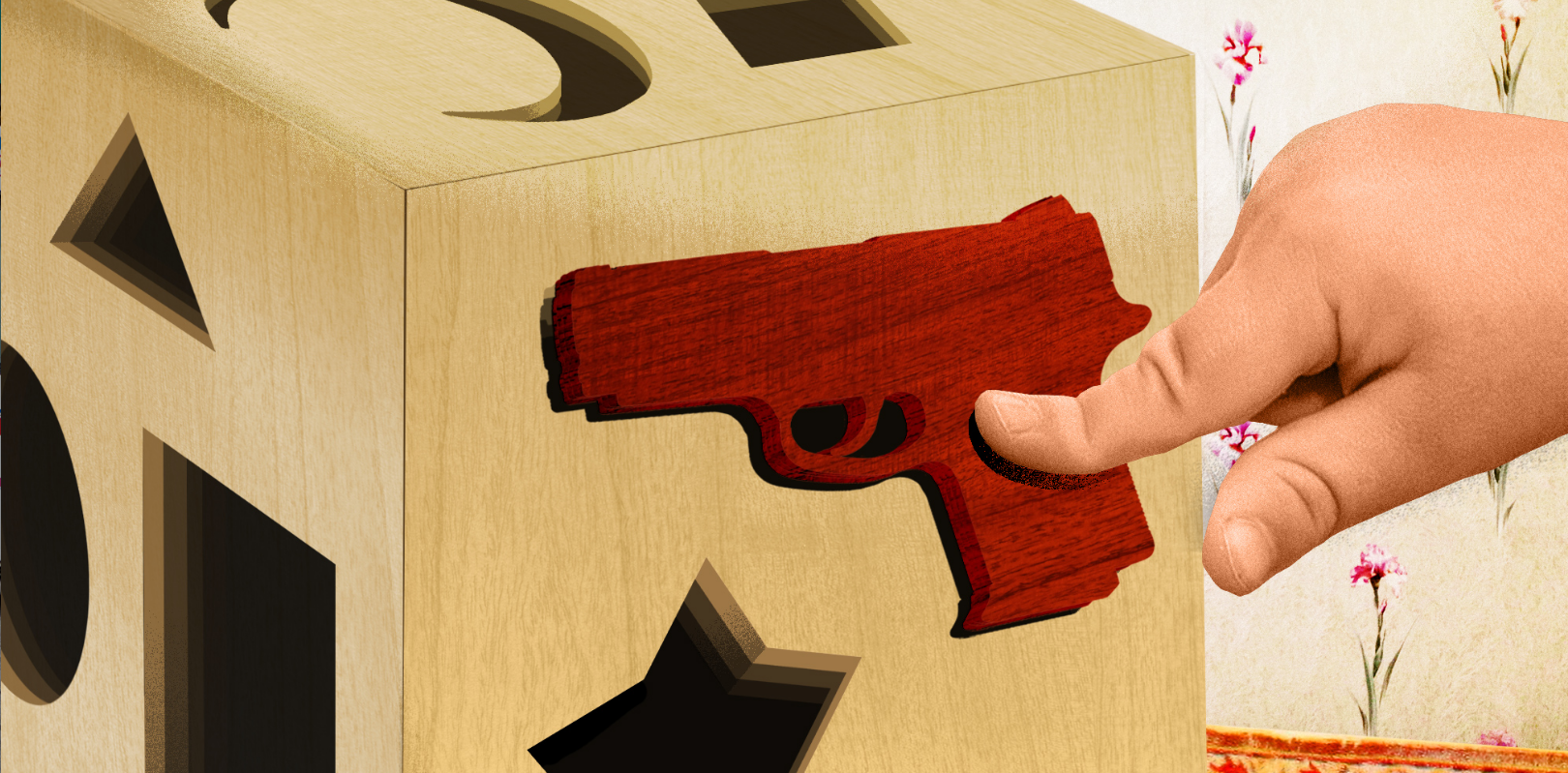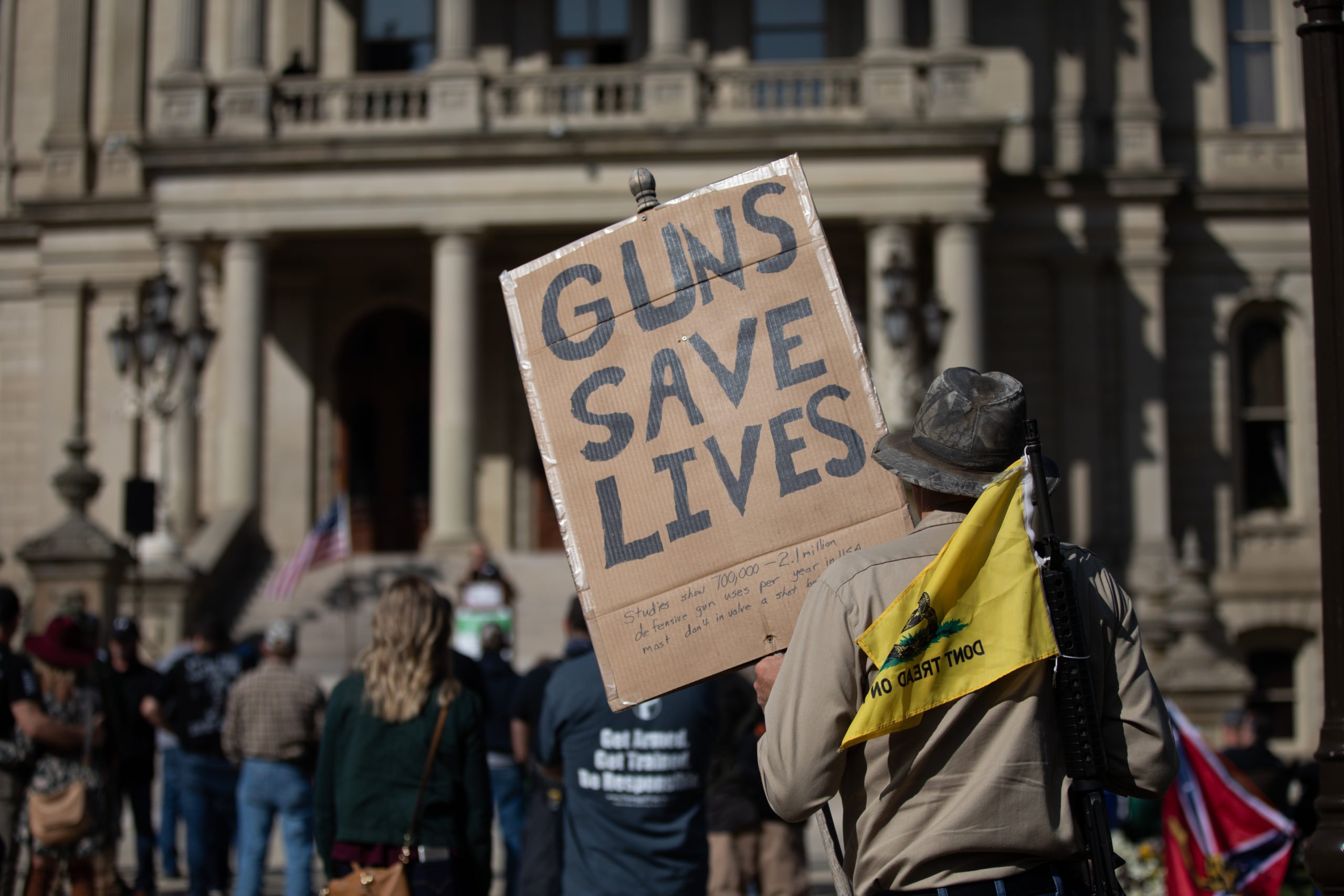Accidental gun deaths aren’t as common as firearm suicides or homicides. But they generate public concern because they’re so preventable, and often involve children.
But exactly how much of a problem are unintentional shootings? And who are they hurting the most?
A reader wants to know: “How often are guns involved in accidental deaths?”
First things first: What is an accidental shooting?
Public health experts consider a shooting unintentional when someone is struck by a bullet that wasn’t purposely fired at them.
This definition encompasses a wide range of scenarios: someone accidentally discharging a gun while cleaning or reloading it; hunters mistaking one another for prey; a shootout that wounds or kills bystanders; or a bullet fired in self-defense that hits the wrong target. Unintentional shootings also include incidents in which stray bullets enter homes and cars. Frequently, accidental shootings occur when kids find guns and, mistaking them for toys, unintentionally fire them, hurting themselves or someone nearby.
An estimated 37 percent of gunshot injuries in the U.S. are the result of accidental shootings. Our reader asked specifically about deaths, so we focused on those. And as we combed through the data, we found an alarming trend that affects the very youngest U.S. residents.
What the data shows
Let’s start with the Centers for Disease Control and Prevention’s interactive WONDER database, which contains death certificate data collected at the state level. According to provisional mortality statistics from 2021, a total of 224,935 people died in accidents in the United States, 549 of them in unintentional firearm discharges. That makes guns the 15th leading cause of accidental death, far behind poisoning and car accidents.
When we look at overall gun deaths, accidents continue to account for a sliver of incidents. Of the 48,830 total gun deaths in 2021, one percent were unintentional shootings. While that proportion is small, several countries’ annual gun death tolls don’t even exceed America’s accidental gun death toll in a single year, including Australia, Japan, England, Spain, and Switzerland.
Once we answered our reader’s question, we started digging deeper into the CDC statistics to look at trends in accidental gun deaths — and to determine who exactly is dying. What we found was surprising.
Deaths drop overall, but some populations see startling increases
While the rate of overall gun deaths in the U.S. is nearing all-time highs, the rate of accidental shooting deaths has actually dropped in the last 25 years. In 1997, according to CDC data, 981 people died in unintentional shootings. That’s an age-adjusted rate of 0.4 shootings per 100,000 people — twice as high as last year’s rate of 0.2. (Researchers point to some caveats with using CDC data to measure accidental gun deaths — more on that in the next section.)
And while the decline is notable, the data shows that one sector of the population has bucked the trend: toddlers. In 2021, children under 5 were among the groups with the highest rate of death from accidental shootings. That’s a staggering shift from 1997, when this group had the lowest rate. Back then, the group with the highest rate of accidental shooting death was 15-to-19 year-olds.
Experts we spoke to offered several possible reasons for the overall decline in fatal gun accidents. “A lot of unintentional firearm deaths among adults have been hunting-related, and hunting has gone down dramatically since the 1990s,” said Daniel Webster, director of the Center for Gun Policy and Research at Johns Hopkins University.
That’s partly because the proportion of Americans who live in rural areas is shrinking. “As you get more and more urban, you just don’t have the opportunity to go plinking and wandering in the woods and other shooting environments,” said David Hemenway, an economist and a professor of health policy at Harvard. Hemenway also said that improvements in trauma care over the last quarter century means that some people who would have died an unintentional gun death in 1997 might survive today.
“Unintentional shootings have been declining for at least a century — as far back as we have data, at any rate — and recent data just continue that trend,” said Garen Wintemute, the director of the Firearm Violence Research Center at the University of California, Davis, who has spent the last 40 years studying gun violence and prevention.
The CDC data also suggests that accidental shootings are taking an increasingly disproportionate toll on people of color, hitting Black children under 5 the hardest. That group, which had the highest rate of unintentional shooting deaths in 2021, had one of the lowest rates in 1997. Overall, the accidental shooting death rate for Black people last year was twice as high as it was for white people.
We asked researchers about the racial disparity in accidental gun deaths, and first, they offered some caveats.
Incomplete data makes it hard to measure the true toll
The reliability of the CDC’s unintentional shooting death data has come under question in recent years, as studies have found that gun accidents are sometimes classified as homicides.
In a 2011 study, researchers from the Harvard Injury Control Research Center took unintentional gun-death figures from the CDC and compared them to gun-death figures from the National Violent Death Reporting System (NVDRS), a state-based data collection system for homicides, suicides, and unintentional shooting deaths that draws on a wider range of sources, like coroner and police reports, and includes much more detail about victims the circumstances surrounding their deaths. The researchers concluded that the CDC had missed 38 percent of shootings that the NVDRS had deemed unintentional, and misclassified 42 percent of unintentional shootings as homicides.
Investigating America’s gun violence crisis
Reader donations help power our non-profit reporting.
While NVDRS data is considered to be more accurate in terms of individual incidents, it isn’t complete. At the time of the Harvard study, only 16 states were reporting data to the NVDRS. Today, all 50 states report to the NVDRS, but that nationwide expansion happened in 2019, and newer states are still missing data. Because of this, the CDC, which helped establish the NVDRS in 2002 and still provides technical support to the program, cautions that its data isn’t nationally representative, and that “we do not yet have a complete picture of violent death across the nation.”
(A third source, Gun Violence Archive, which draws on media and law enforcement reports to report shooting data in near-real-time, also tracks unintentional shootings. It recorded 524 unintentional gun deaths in 2021, slightly lower than the CDC’s tally of 549.)
Hemenway, one of the authors of the 2011 study, says a sudden upturn in unintentional firearm deaths among children, and Black children in particular, could be because of an improvement in the way these deaths are coded and classified. For instance, some firearm-related suicides and homicides during the period Hemenway studied, 2003 to 2006, were erroneously reported as accidents when the manner of death was initially classified as “pending” or left blank. And some coroners and medical examiners consider the unintentional shooting of one person by another to be a homicide, even if it isn’t deliberate. Hemenway’s study found that the incidents most likely to be misclassified as accidents involved people aged 10 to 19, people of color, and people playing with guns.
But errors in coding and classification are only part of the story.
More unsecured guns, more opportunities for tragedy
The NVDRS, like CDC WONDER, also shows Black children and teenagers having far higher rates of unintentional gun death than their white peers in recent years. Hemenway says this could be because fewer people hunting means fewer hunters — who tend to be predominantly white — getting accidentally shot. At the same time, American gun ownership, once dominated by older white men in rural areas, is diversifying.
Dr. Alfiee Breland-Noble, a psychologist and the founder of the AAKOMA Project, a Virginia-based nonprofit that aims to bring mental health care to marginalized youth, said Black people are buying guns for the same reason as white people: self-defense.
“For Black people specifically, there is a conversation around, ‘We have a duty to protect ourselves because we are often the targets of gun violence,’” said Breland-Noble, whose father, a Navy veteran, is a longtime owner of guns for self-defense. But Black people, she said, have added reason to stand their ground: racially targeted violence, like the mass shootings in Charleston in 2015 and in Buffalo last May, as well as police brutality that is disproportionately directed at people of color.
“For African-Americans, it may be, ‘I just need to protect my physical person, because I see all of these things happening almost daily that suggests that I might be a target for no other reason than people’s racism,’” she said.
People who buy guns for self-defense tend to keep them accessible so they can grab them at a moment’s notice. This behavior has been aided by aggressive gun lobby messaging and a wave of legislation to expand the ability to carry firearms in public.
“The more gun owners carry guns outside the home, the more opportunity there is for a gun to be left unsecured,” said Webster, the Johns Hopkins researcher, who first studied child gun access prevention in 1992. The pandemic has only exacerbated this, he said. “Since 2019, gun thefts are up. Gun sales are up. Gun carrying is up. More ghost guns are out there. All these factors increase gun exposure to those who are vulnerable.”
This focus on armed self-defense in recent years has influenced the way guns are designed, making them more attractive to kids, says Cassandra Crifasi, director of research and policy at the Johns Hopkins Center for Gun Violence Solutions. Technological innovation has been concerned with “making guns easier to use as opposed to making them safer,” said Crifasi, a firearms enthusiast who shoots recreationally and competitively. The gun industry has focused on making firearms lighter, more concealable, and easier to fire. That also makes it more likely that young children will mistake them for toys, she said.
Crifasi points to a 2021 Harvard survey that found that 36 percent of gun owners with children leave their firearms unlocked in the home. Fifteen percent stored at least one firearm both unlocked and loaded, which poses the most risk for children. The study also found that gun owners with kids were more likely to keep their firearms locked up and unloaded than they were just a few years ago — 44 percent, compared to 29 percent in 2015. But the researchers cautioned that this trend toward safer gun storage was offset by an increase in the number of children who live in armed households — 30 million in 2021, up from 23 million in 2015. Then, as now, an estimated 4.6 million kids lived in homes with unsecured firearms.
The CDC data also revealed geographical trends. The states with the highest rates of unintentional shooting deaths in 2021, according to the CDC, were Mississippi, Louisiana, Kentucky, Missouri, and South Carolina — all of which have permissive gun laws.
The most common circumstances surrounding unintentional firearm deaths in America, according to a 2019 study that drew on NVDRS data, include playing with a gun (28 percent of victims), thinking a gun is unloaded (17 percent), hunting (14 percent), loading or cleaning a gun (13.5 percent), and dropping a gun (6 percent). Alcohol was involved in nearly a quarter of incidents. Two-thirds of the victims who’d been playing with a gun were under the age of 10.
“I think the single most important thing that gun owners can do, if you are choosing to exercise the right to have a gun in your home,” Crifasi said, “you need to exercise the responsibilities that come with that.”


